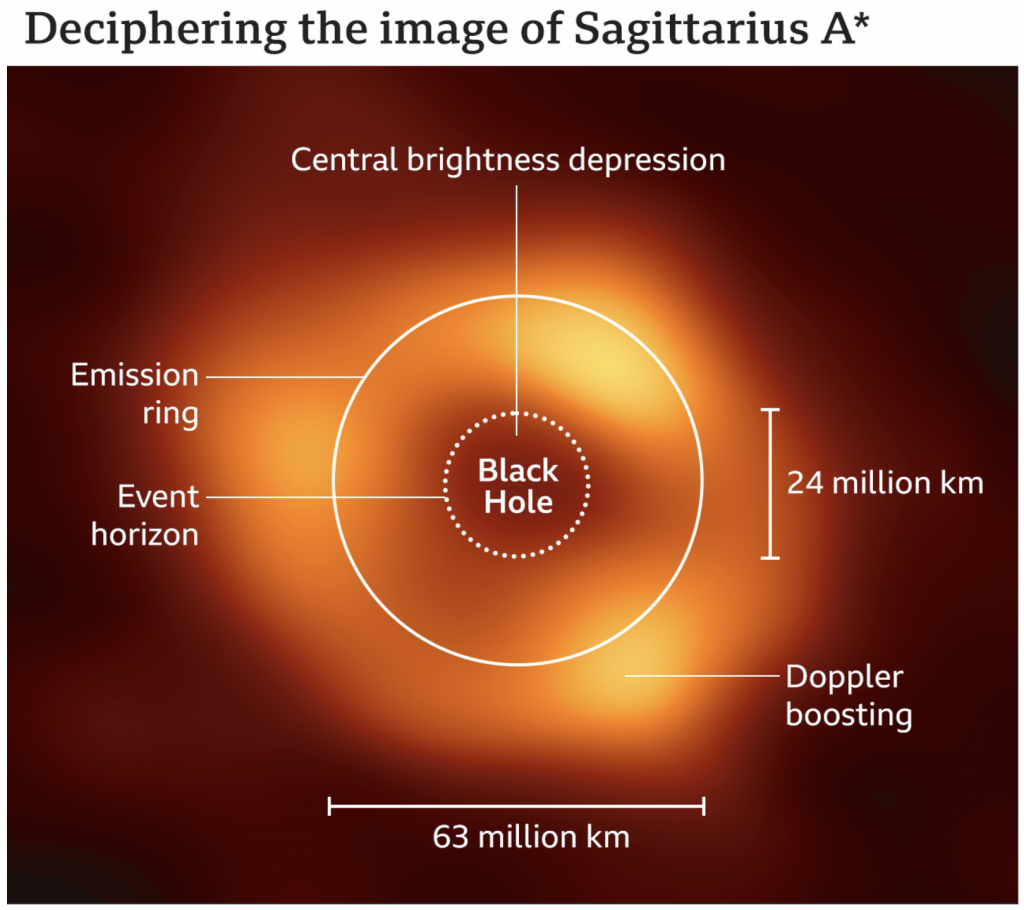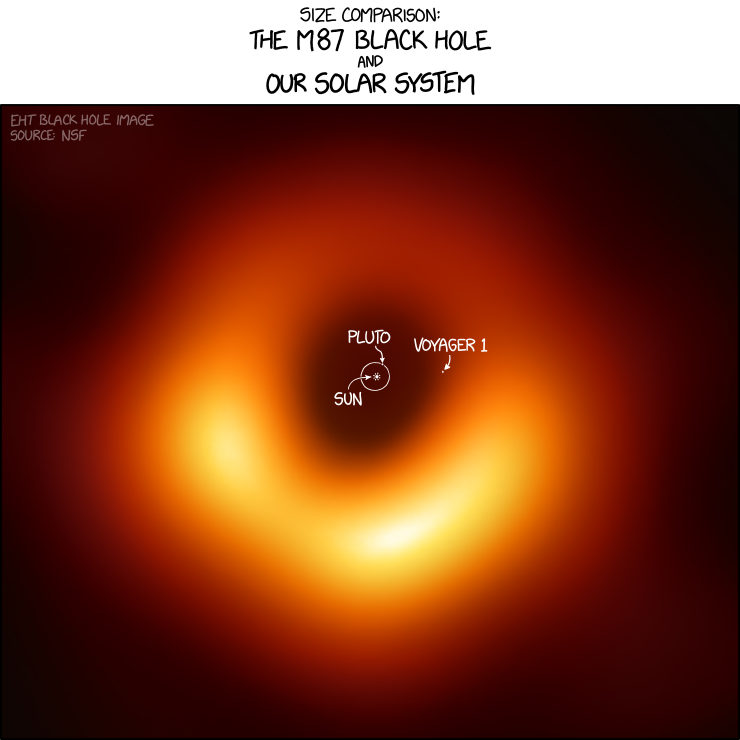Two years ago I posted about how the Event Horizon Telescope Collaboration managed to take the first photograph of a black hole, in particular a supermassive black hole at the centre of the M87 galaxy, one of those galaxies far, far away that we see at a long time ago.
This morning, the same group of scientists released the first photograph of Sagittarius A*, the supermassive black hole at the centre of our very own Milky Way Galaxy. The BBC article I read this morning included the photo of the black hole, which you should definitely check out because of its importance in the history of astronomy. But, for our purposes here on Coffeespoons, I wanted to look at the diagram the designers at the BBC made to explain the photograph.

The designer used some simple white lines with a thicker stroke for the axis and defining features and a thinner line to point to elements of the photo. In particular I like the dotted line for the black hole, because there is no real way to photograph the hole itself since it consumes all the light we would need to image it. Instead, we photograph the “black hole” at the centre of the accretion disk, all the super heated gas and matter slowly swirling around and collapsing into the singularity. We also get two axes to show the size of the ring and that of the black hole itself. The ring measures a diameter of about 63 million kilometres. The distance from the Sun to Mercury, the closest planet to our Sun, is 58 million kilometres.
Supermassive indeed.
Well done, science. Well done.
Credit for the piece goes to the graphics team at the BBC.


